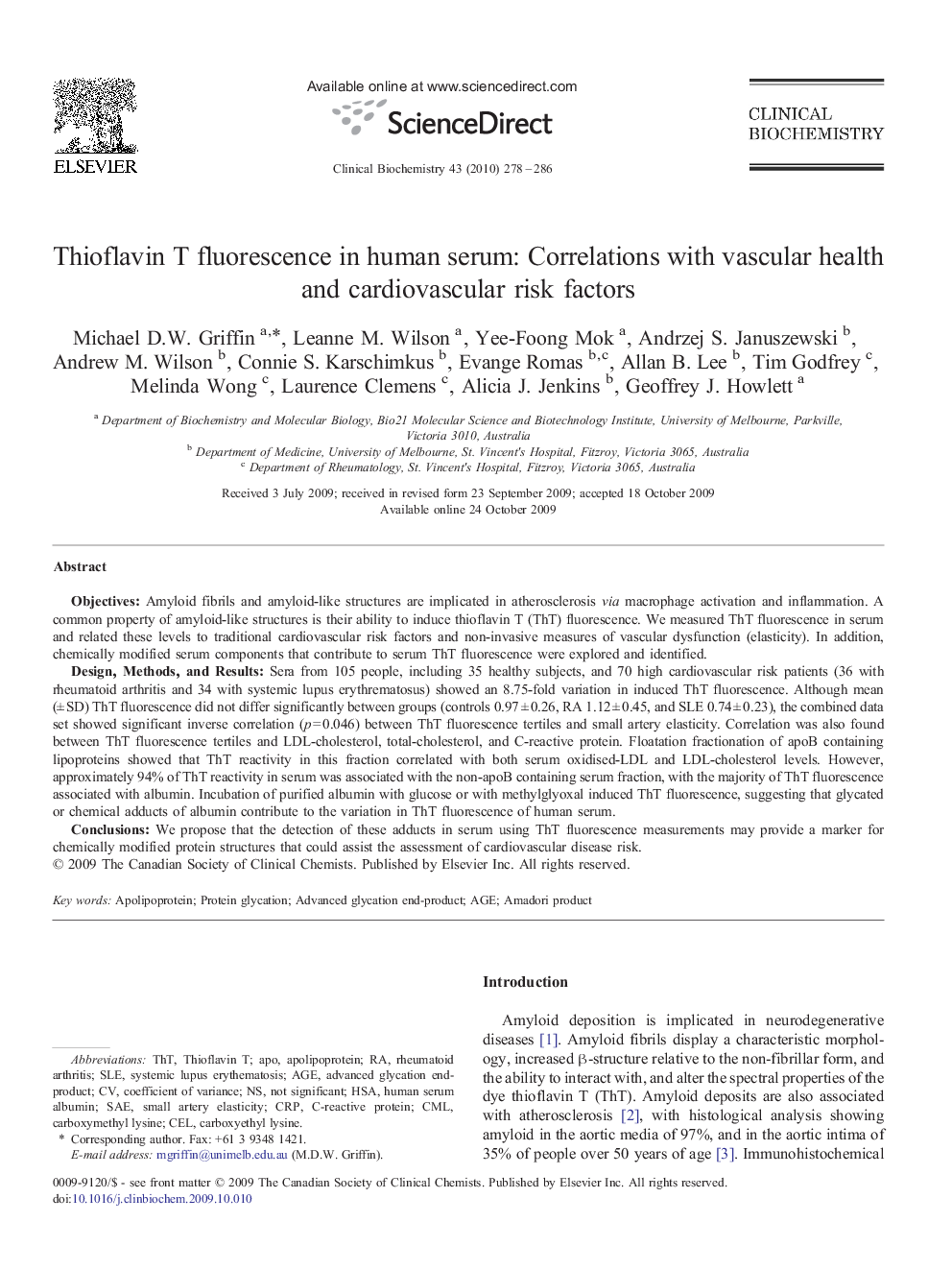| کد مقاله | کد نشریه | سال انتشار | مقاله انگلیسی | نسخه تمام متن |
|---|---|---|---|---|
| 1969782 | 1059782 | 2010 | 9 صفحه PDF | دانلود رایگان |

Objectives:Amyloid fibrils and amyloid-like structures are implicated in atherosclerosis via macrophage activation and inflammation. A common property of amyloid-like structures is their ability to induce thioflavin T (ThT) fluorescence. We measured ThT fluorescence in serum and related these levels to traditional cardiovascular risk factors and non-invasive measures of vascular dysfunction (elasticity). In addition, chemically modified serum components that contribute to serum ThT fluorescence were explored and identified.Design, Methods, and Results:Sera from 105 people, including 35 healthy subjects, and 70 high cardiovascular risk patients (36 with rheumatoid arthritis and 34 with systemic lupus erythrematosus) showed an 8.75-fold variation in induced ThT fluorescence. Although mean (± SD) ThT fluorescence did not differ significantly between groups (controls 0.97 ± 0.26, RA 1.12 ± 0.45, and SLE 0.74 ± 0.23), the combined data set showed significant inverse correlation (p = 0.046) between ThT fluorescence tertiles and small artery elasticity. Correlation was also found between ThT fluorescence tertiles and LDL-cholesterol, total-cholesterol, and C-reactive protein. Floatation fractionation of apoB containing lipoproteins showed that ThT reactivity in this fraction correlated with both serum oxidised-LDL and LDL-cholesterol levels. However, approximately 94% of ThT reactivity in serum was associated with the non-apoB containing serum fraction, with the majority of ThT fluorescence associated with albumin. Incubation of purified albumin with glucose or with methylglyoxal induced ThT fluorescence, suggesting that glycated or chemical adducts of albumin contribute to the variation in ThT fluorescence of human serum.Conclusions:We propose that the detection of these adducts in serum using ThT fluorescence measurements may provide a marker for chemically modified protein structures that could assist the assessment of cardiovascular disease risk.
Journal: Clinical Biochemistry - Volume 43, Issue 3, February 2010, Pages 278–286